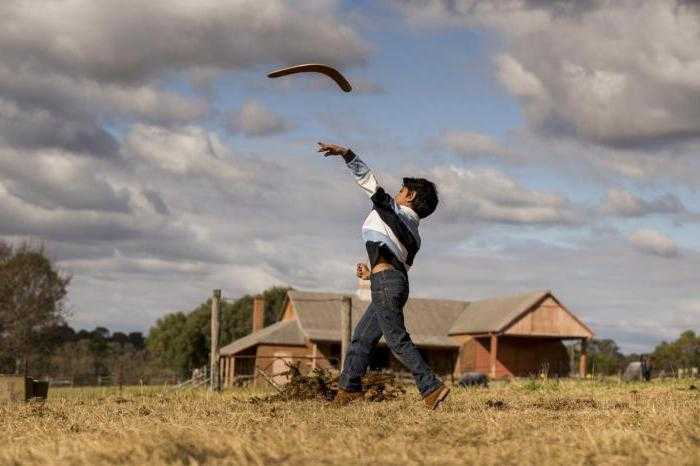Mastering the capture technique
How to throw a boomerang? It's a good idea to start by understanding the technique of catching a projectile. It's worth noting right away that you can hold the boomerang with either hand, both the leader and the weaker. The key is to feel comfortable. Instead, concentrate on the position of the device. The convex part of the boomerang must necessarily face the thrower.
A common technique is to hold the projectile between two fingers - the index finger and thumb. To make a throw, you bend your wrist towards you, then throw the device sharply forward. This technique helps create sufficient momentum for the boomerang to slip out of your fingers and actively rotate in the air.
There's another effective hold that will help you understand how to throw a boomerang. It involves holding the projectile with all the fingers of your hand. It's advisable to grip the device closer to the bottom edge. To create momentum, you need to swing the product with a light jerk of the index finger. This will cause the boomerang to spin.

The throw
How do you throw a boomerang and make it come back? This will require the creation of an impressive acceleration. For this reason, the throw must be strong. A projectile will need a good supply of kinetic energy not only to get away from the thrower, but also to overcome the path in the opposite direction.
As a general rule, anyone just beginning to learn how to throw a boomerang is bound to be disappointed for a long time. After all, the first attempts at throwing a projectile turn out to be extremely timid and uncertain. To improve results in such a difficult task, all you need to do is choose the right throwing direction. The target should be a conditional line just above the horizon. It's not worth trying to throw the boomerang too high. In fact, under the influence of downward air currents, the device itself will hurtle into the heavens.

The inclination
How do you throw a boomerang and make it come back? This will require the creation of an impressive acceleration. For this reason, the throw must be strong. A projectile will need a good supply of kinetic energy not only to get away from the thrower, but also to overcome the path in the opposite direction.
As a general rule, anyone just beginning to learn how to throw a boomerang is bound to be disappointed for a long time. After all, the first attempts at throwing a projectile turn out to be extremely timid and uncertain. To improve results in such a difficult task, all you need to do is choose the right throwing direction. The target should be a conditional line just above the horizon. It's not worth trying to throw the boomerang too high. In fact, under the influence of downward air currents, the device itself will hurtle into the heavens.

Choosing a launch site
It's best to understand the peculiarities of throwing in open areas. There should be no tall structures or trees within several dozen meters of the thrower. An excellent platform for throwing a boomerang would be a stadium or an open field. Also beware of reservoirs if you don't want to go fishing for a projectile.
Learning to throw a plastic or wooden boomerang correctly is absolutely not recommended in a crowded place. Nor is it necessary to do so near buildings. The projectile can easily alter the given trajectory, injuring others or damaging other people's property.
You should always throw a boomerang from the center of an open area. This not only avoids trouble, but also allows you to have a reserve of free space at your disposal for practicing shots.

Wind blowing factor
To learn how to throw a plastic boomerang, you need to practice throwing in the right weather conditions. An important point is the strength of the wind. It's advisable to learn how to handle the projectile when the element's speed doesn't exceed 4.5 m / s. If the wind is too strong, the boomerang will derail and fly headlong.
How should the projectile be thrown? It should be thrown slightly to the right of the wind direction. This will increase the probability of the boomerang returning to your hands.

How to catch a boomerang
To avoid accidental injury, you need to learn how to catch the projectile correctly. To do this, you need to stretch your arms forward and assume a position in which the boomerang is level just below your shoulders. As soon as the device reaches the indicated plane, simply close your palms abruptly. In this way, the boomerang should be in a kind of “sandwich”.
If the projectile has picked up too much speed in flight, or if environmental factors prevent you from keeping it clearly in the field of vision, it's best to leave the trajectory of movement, turn away or fall to the ground. Otherwise, you could end up with a rather painful hit.
Having perfectly mastered the technique of catching a boomerang with closed palms, it's worth moving on to more complex techniques. We're talking about catching the projectile by the hand, wrapped around the back, under the leg, etc. In this case, the use of tight-fitting clothing, a protective helmet and gloves with material cut into the fingers will help prevent injury.

